70% of businesses use content marketing to grow their company.
Are you one of them?
After you’ve published a blog post, it’s easy to think that your job is done, and you can hit the road.
Not so fast.
One of the key components of a successful content marketing strategy is repurposing content.
To repurpose means that you take one piece of material and turn it into another while keeping the same message.
This maximizes the efficiency of content marketing, as one piece of content can be turned into several with low effort.
That’s why I’m writing this guide today on how to repurpose blog posts.
Articles are at the heart of most companies’ content strategy, so I’ll be approaching this topic as if you’ve written blogs and wish to repurpose those.
Follow along 🙂
Why should you repurpose content?
You want the best bang for your buck, right?
You’re spending a hard-earned budget on content creators, services, and tools.
Naturally, you want a good ROI on content marketing campaigns.
That’s the first reason to repurpose content: it increases marketing performance and returns.
Think about it…
Let’s say that you have a blog post.
You turn it into a video, podcast episode, slideshow, infographic, and social media content.
Suddenly you’ve expanded into five different formats and channels with little effort since 90% of the work (creating the original piece of content) is done.
This boosts brand awareness, traffic, and engagement.
Take Copyblogger for illustration. (Shout out to Brian Clark!)
He and his team published a blog post titled “The 3-Step Journey of a Remarkable Piece of Content.”
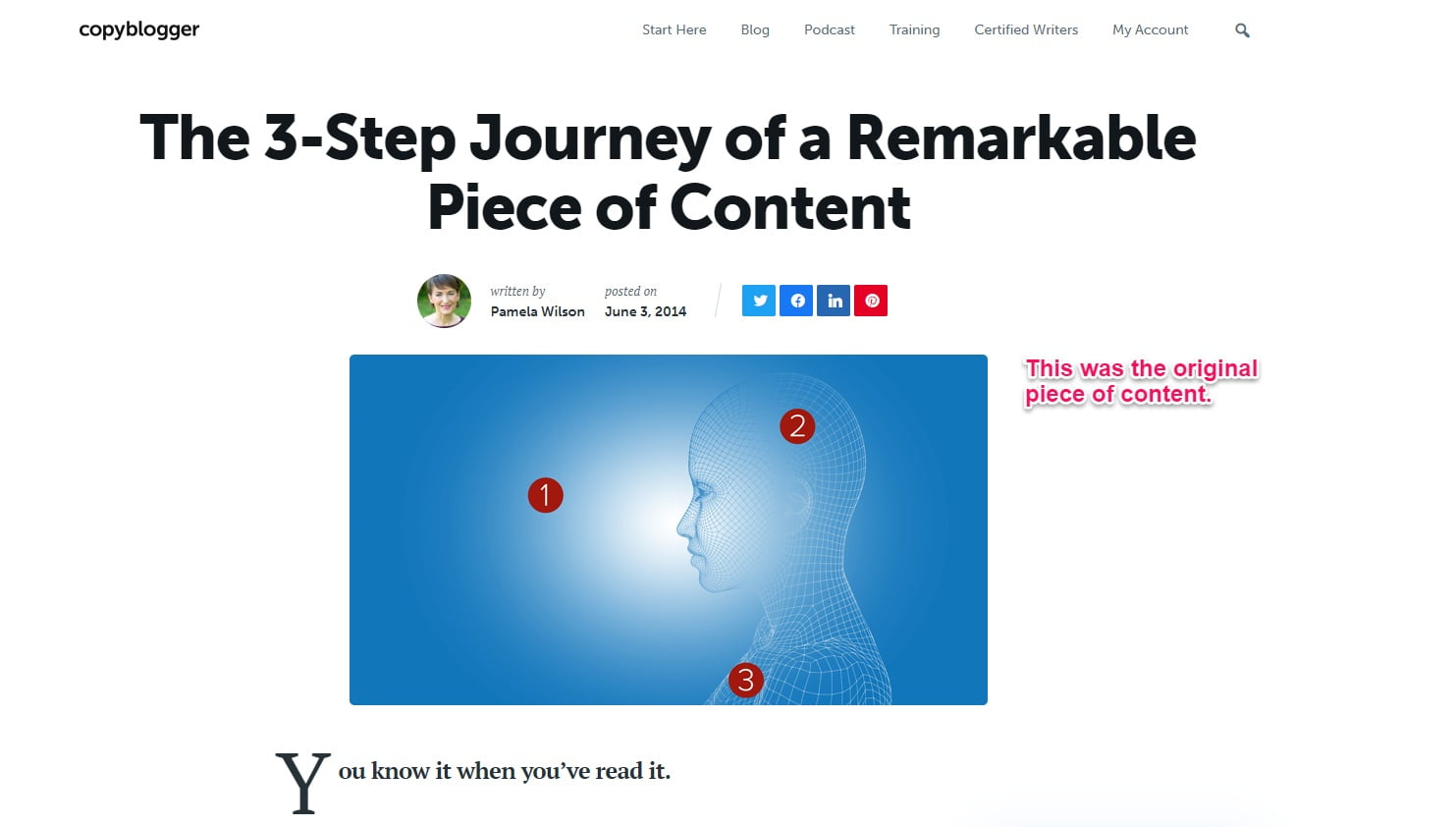
It was transformed into a slideshow presentation for Slideshare that has over 87,000 views.
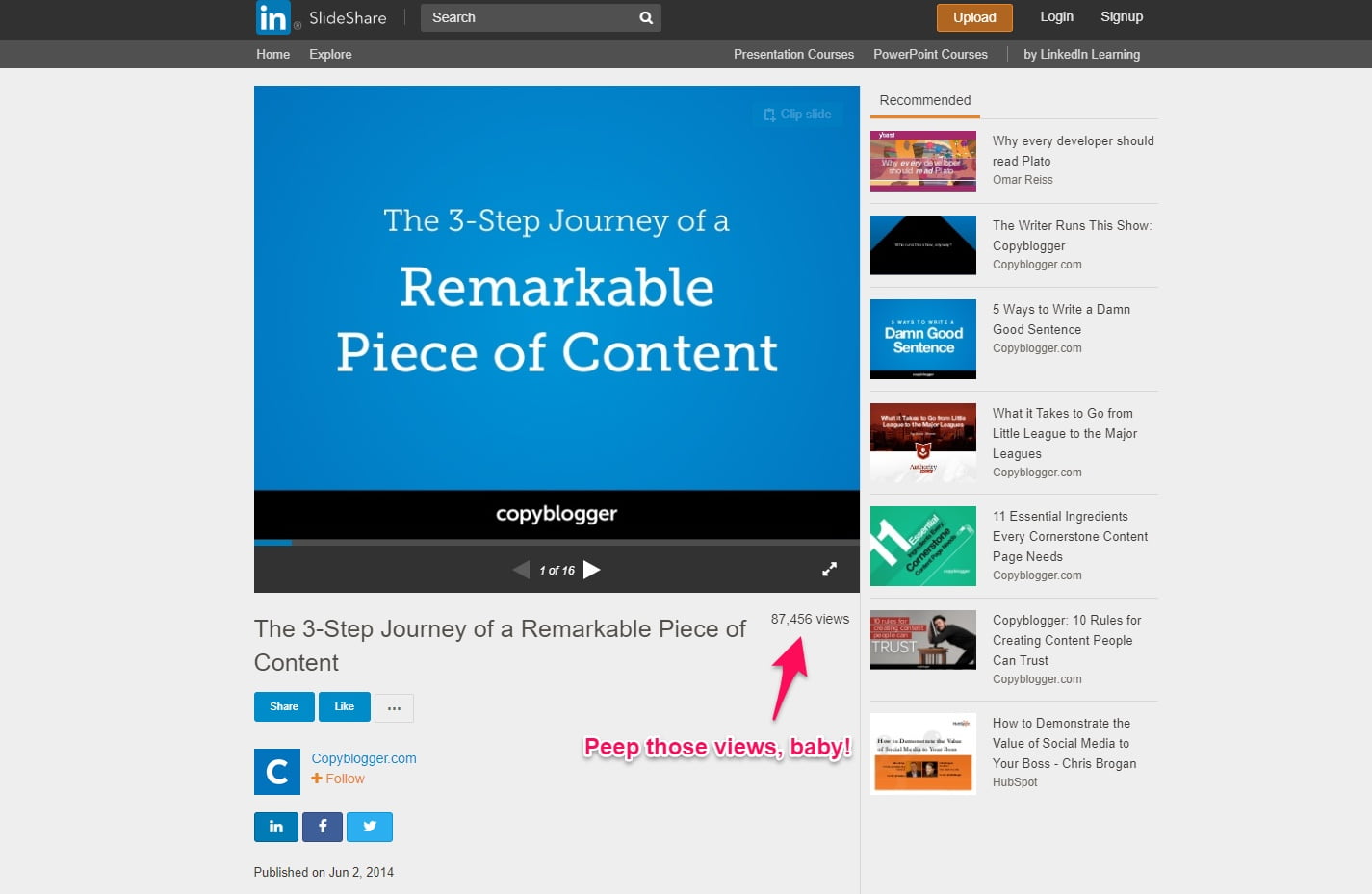
In sum: it moves the needle. Big time.
That brings me to my next point.
When should you repurpose content?
It doesn’t matter if you have ten pieces of content or enough to fill a football stadium.
Every piece of content you publish should immediately be repurposed into other formats.
The best time to start is now. Today. Go do it.
Start transforming content you have stashed in the vault with the tips I’m sharing ahead.
Best ways to repurpose content
These are content repurposing ideas your business can start using today to drive more traffic and performance.
1. Slideshows
Venngage surveyed 400 public speakers who presented slide decks at MarTech conferences. This is some of the data they collected.
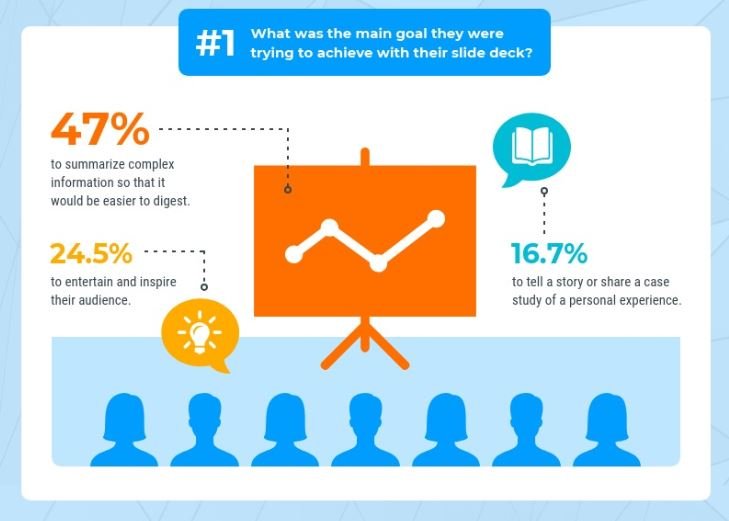
47% said that the main goal of creating a slide show was to summarize information in a digestible manner. 24.5% did so to entertain and inspire their audience, while another 16.7% used it as a way to tell a story.
Repurposing blog posts into slideshows is quick and easy, as well. I recommend using the website SlidesCarnival to find professional-looking themes.
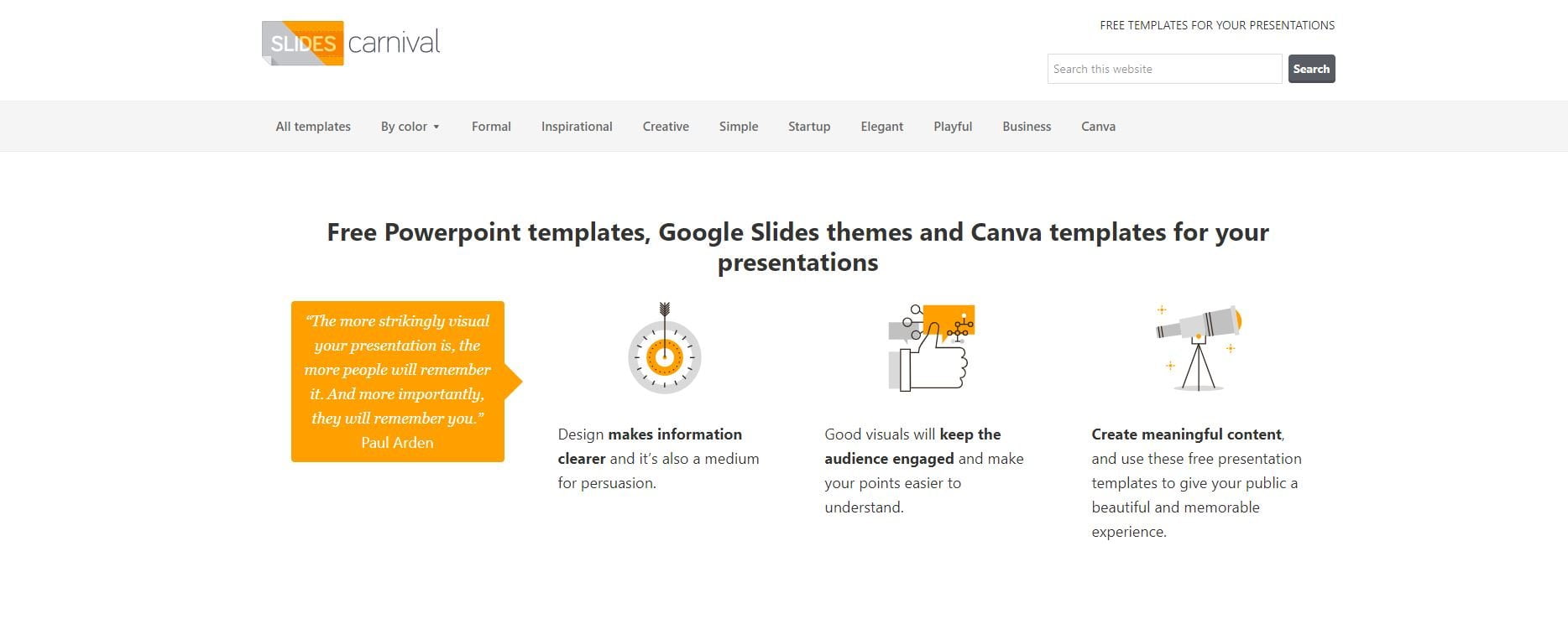
Click a category from the top navigation, and navigate through until you find a theme you like.
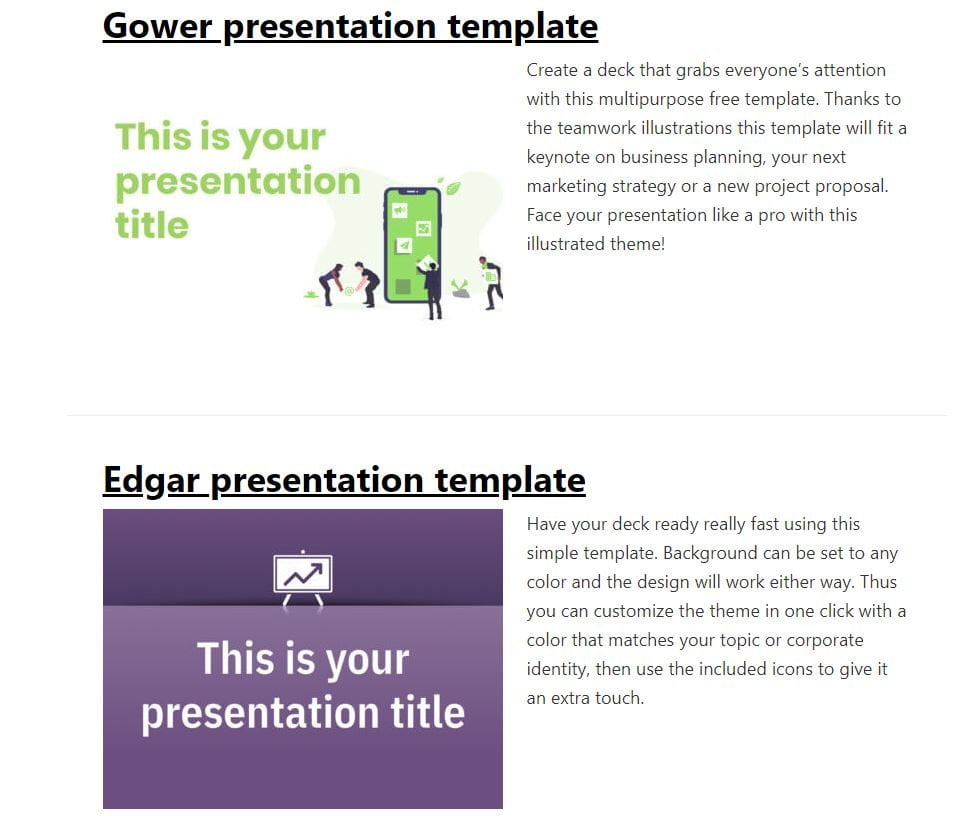
Click on one, and scroll down the page to find the download buttons.
You can either make a copy directly to Google Drive or download it as a PowerPoint file.
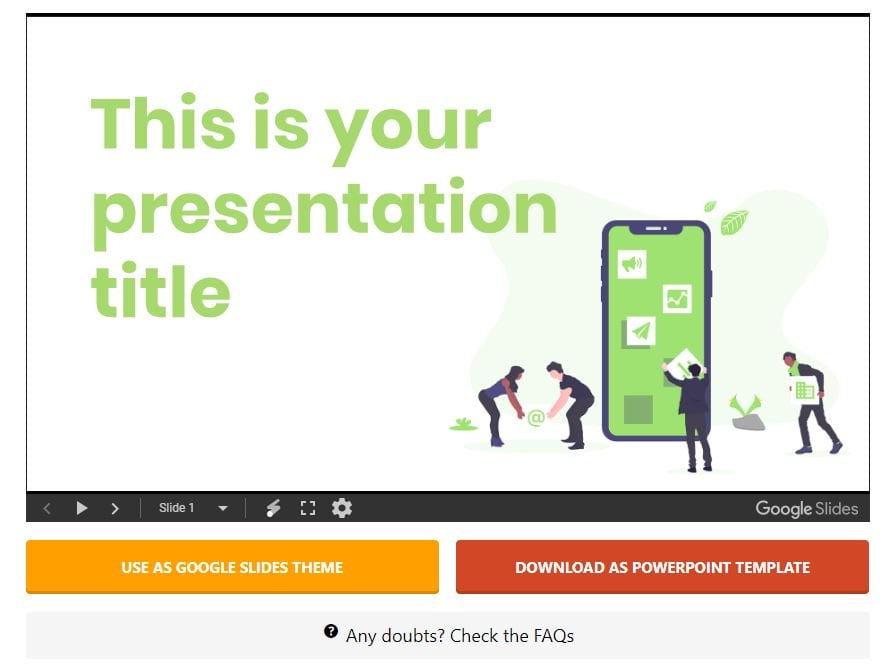
Take the original blog post you wrote and begin pasting it into the slideshow.
Separate major points into different sections just like you would with an article.
You may have to shorten up and adjust some areas of an article for it to make sense in a slideshow, too.
It’s wise to add extra resources or information to make it more enticing for users to check out the slideshow version versus the original post.
Once it’s completed, there are several websites you can share it from, including LinkedIn’s SlideShare.
Sign in and click the upload button from the top right.
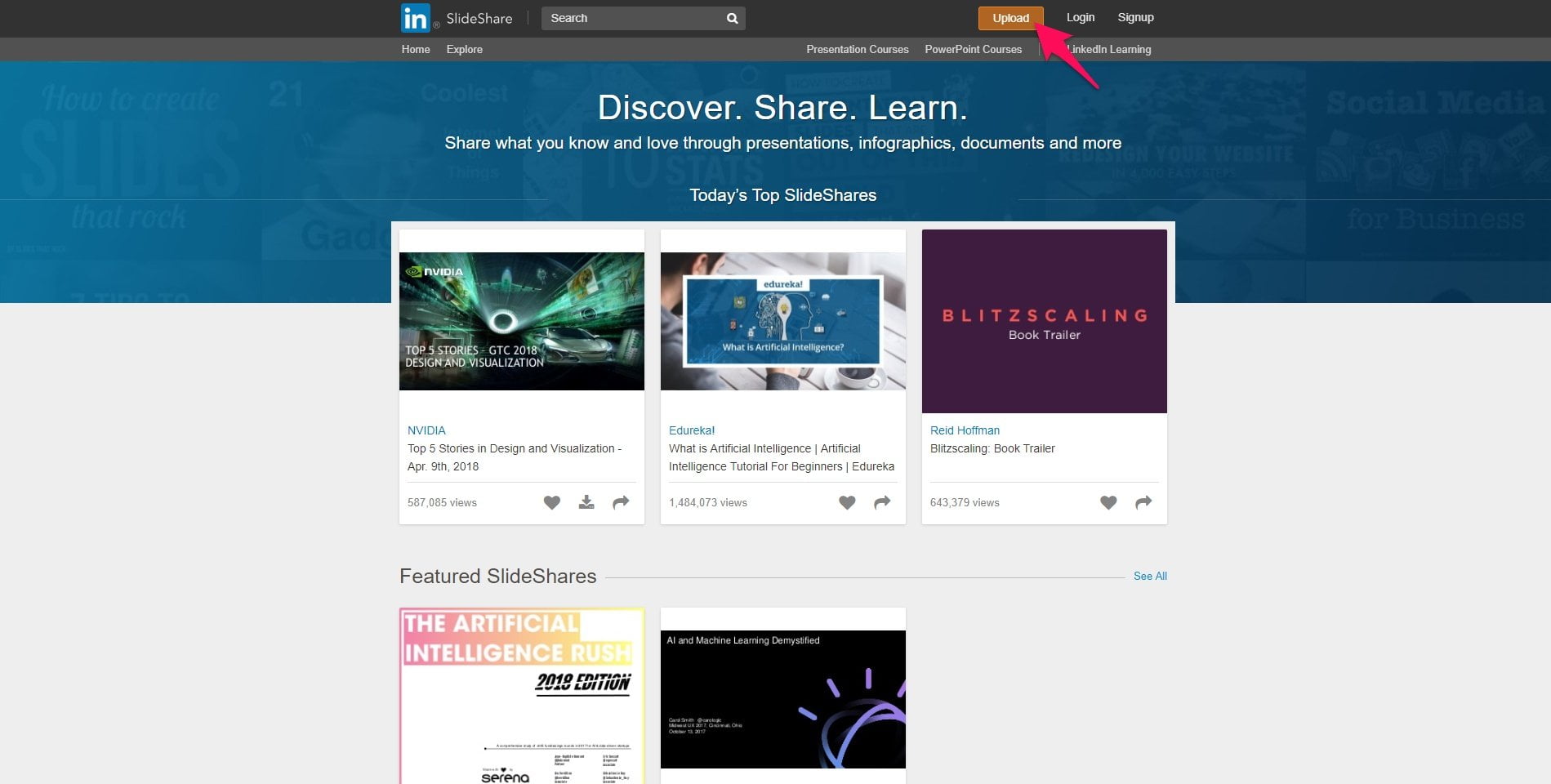
Click the “Select files to upload” button and choose the PowerPoint file of your slideshow.
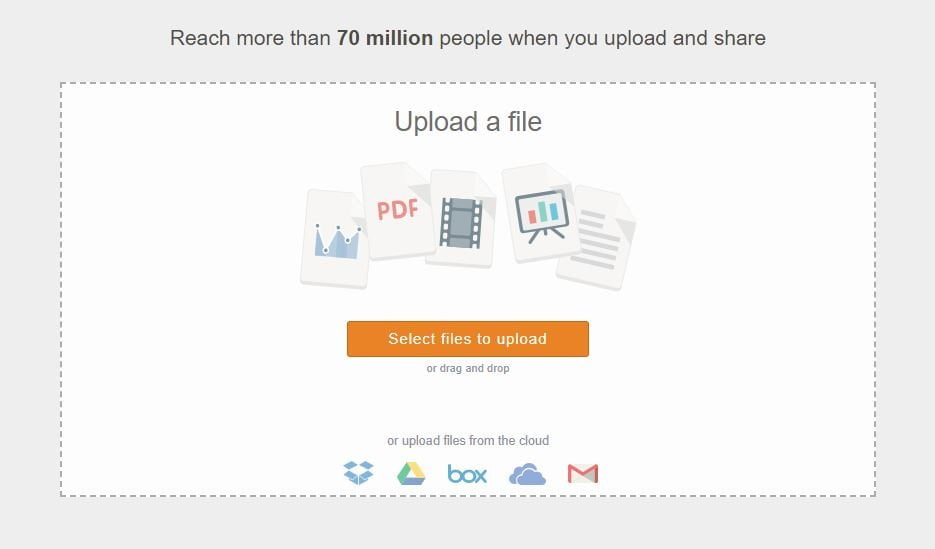
Enter the title, description, category, and tags on the final page before publishing.
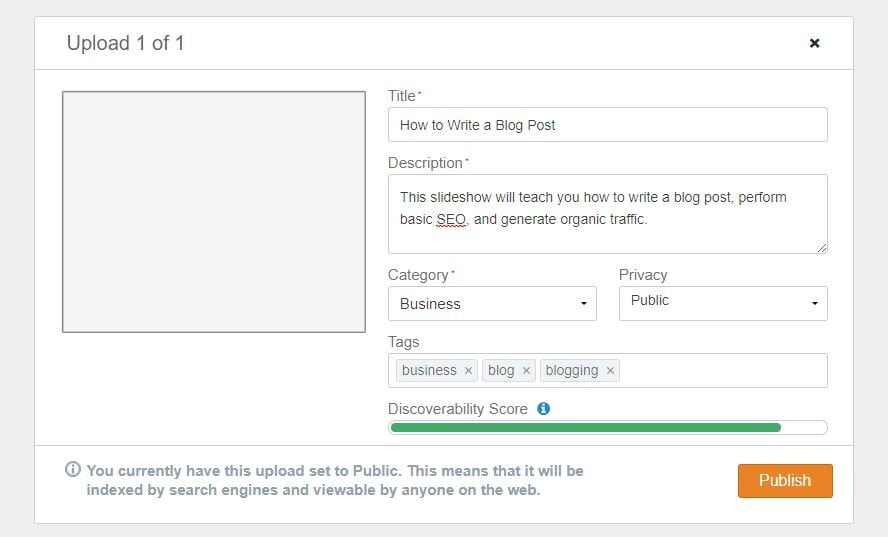
2. Infographic
According to MIT, 90% of the information sent to our brains is visual based.
It makes sense.
Humans interpret the world through what they see.
This is why images are so important in marketing, as they act as visual queues.
They are also entertaining and easy to share among friends and family.
This is why the second format you should repurpose blog posts into is infographics.
I’ve suggested this tool many times, but Canva is extremely powerful for creating infographics in a matter of minutes.
Sign up for an account and click the infographic option from the homepage. If you don’t see it, use the search bar.
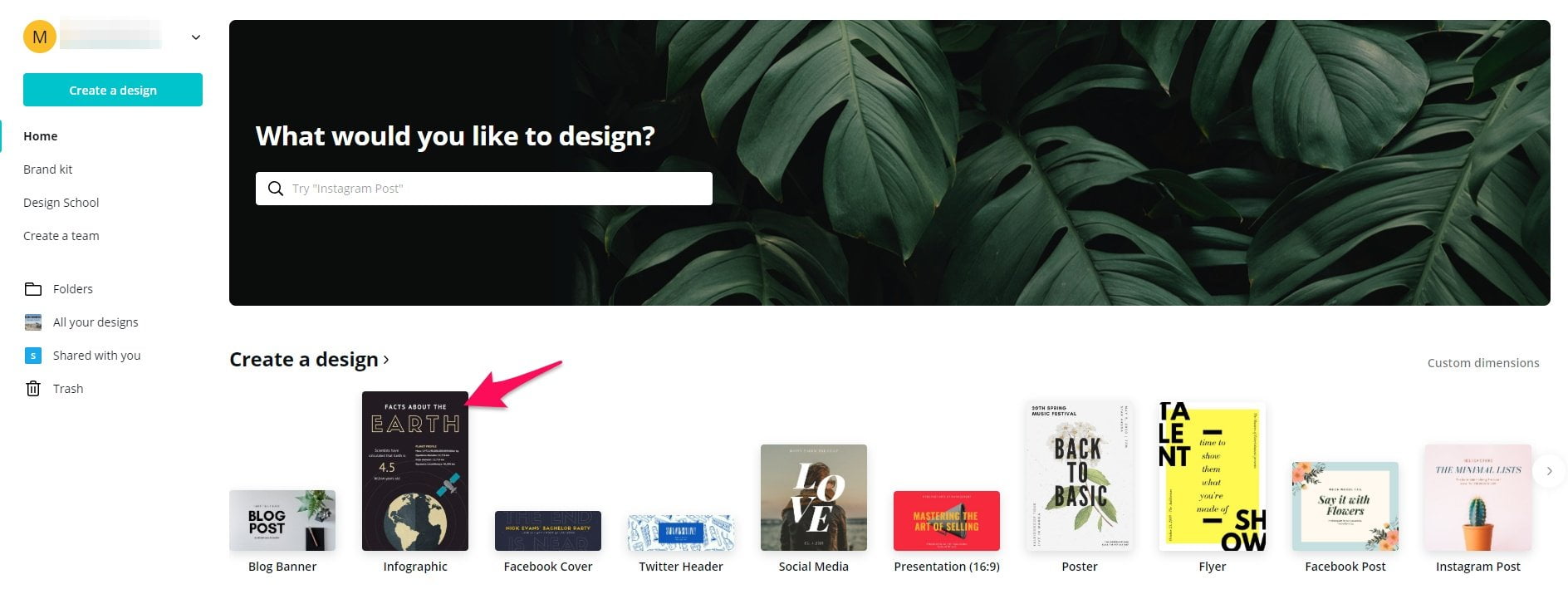
Click a template from the left sidebar and it will apply to your canvas.
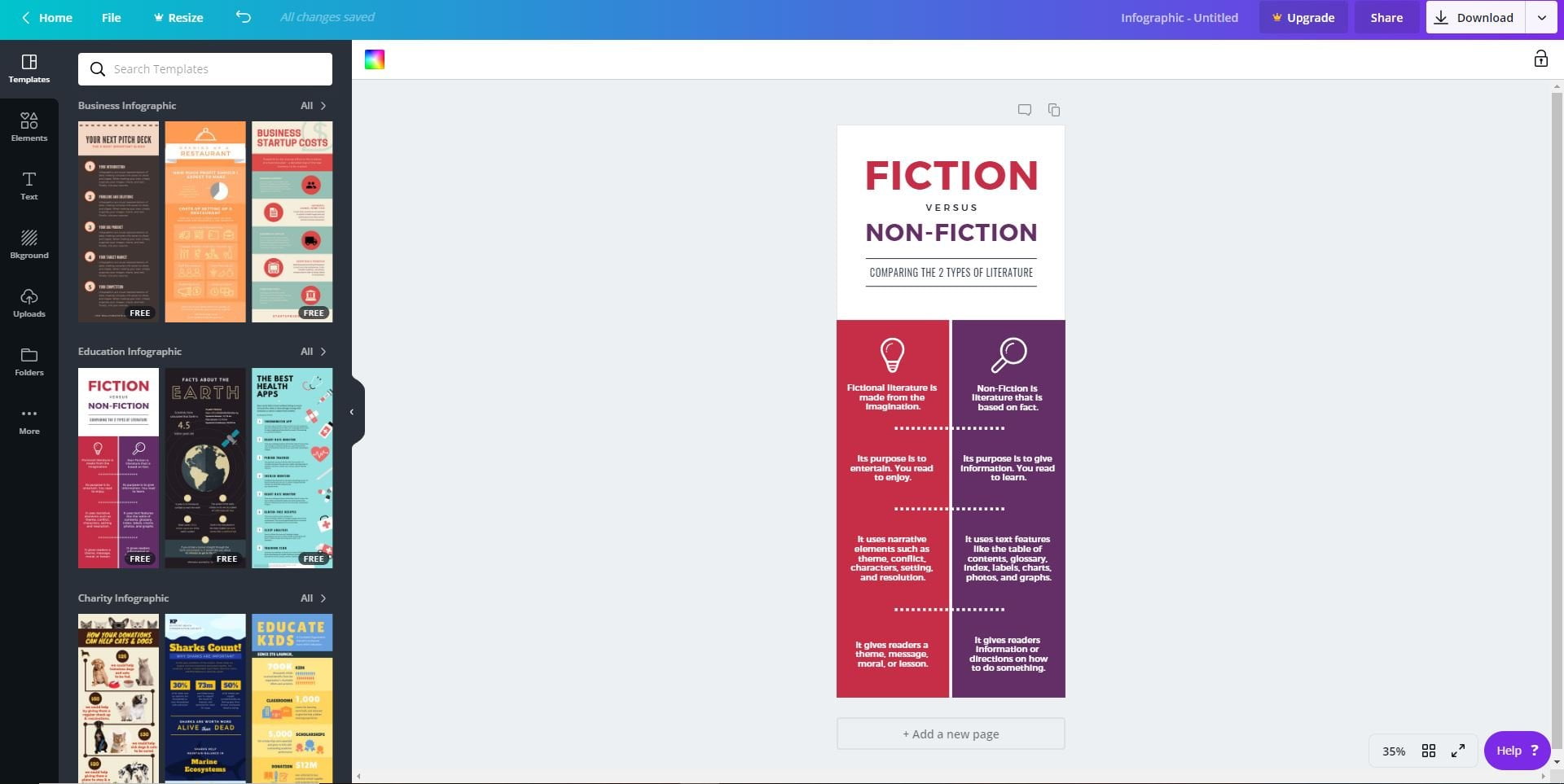
Use this template as a medium to sum up an article. Include all of the major points and data that readers will find the most important.
Ensure that you cite any statistics to include links at the button as references.
If you click the “Elements” tab on the sidebar, you will also gain access to graphics, cartoons, shapes, and other elements to enhance the infographic.
I personally like pulling up infographics from competitors to get inspiration on how I should design my own.
Click the “Download” button from the top right once you’re finished, and then it’s time to upload this bad boy!
The best place to publish infographics is Pinterest. Sign up for an account, click the red plus button on the top right, and choose “Create pin.”
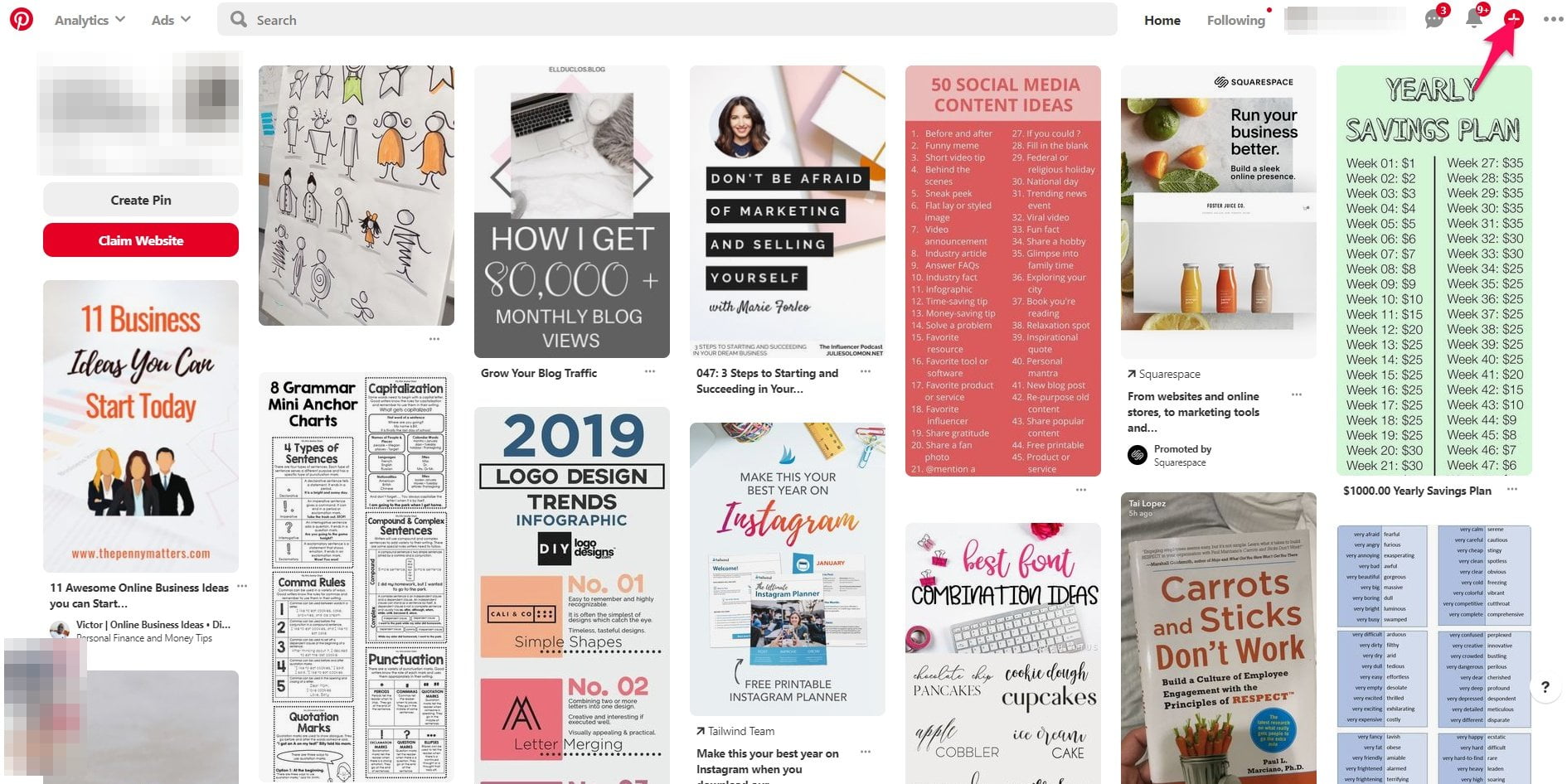
Upload the file on the next page. Enter a title and description with a link to the original blog post it’s based on, as well.
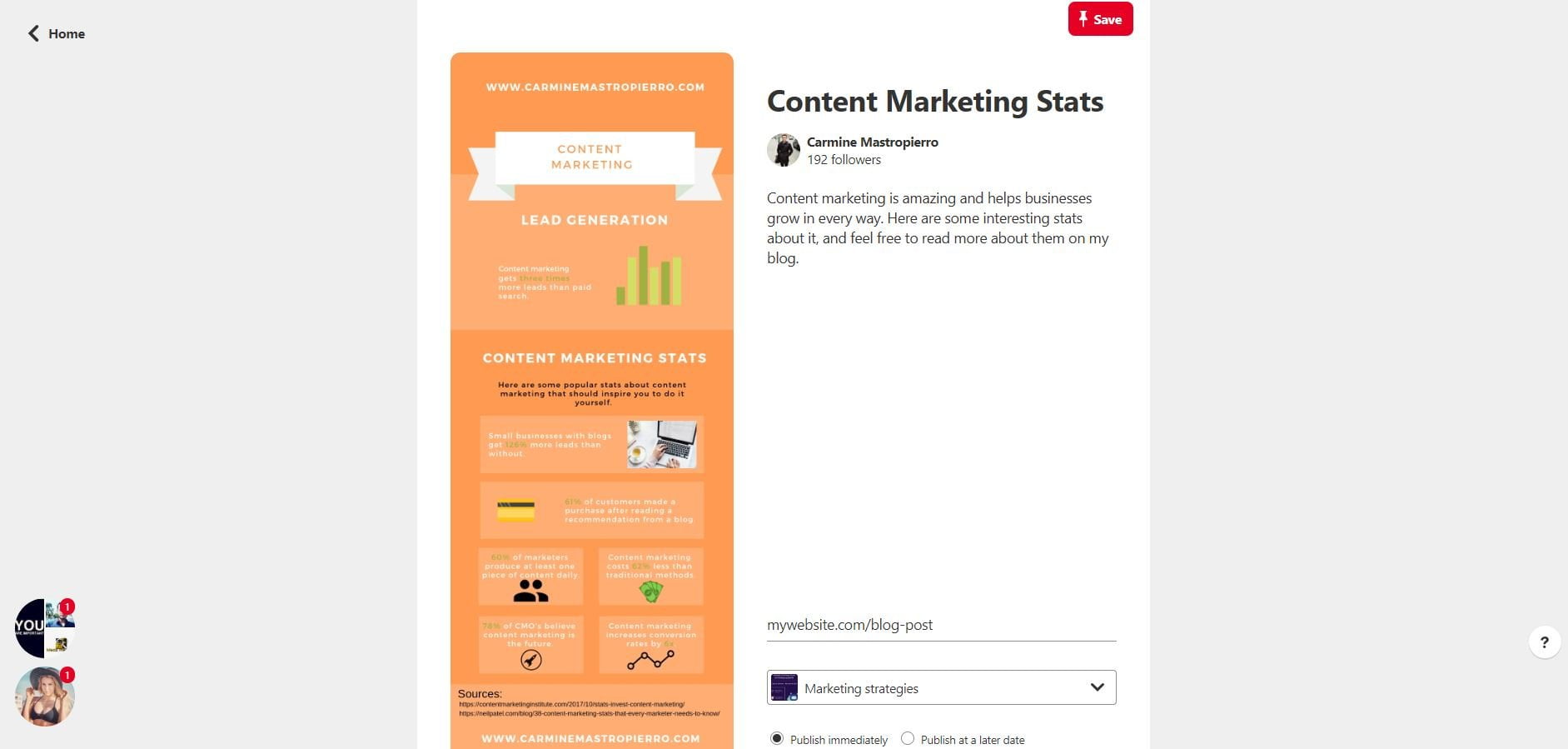
Hit the “Save” button when you’re ready for the world to see your amazing infographic.
3. Podcast
It seems like everyone and their mom has a podcast nowadays.
Do you know why?
Because they’re very easy to make, and audio is quickly becoming one of the most desired forms of content.
You can listen to a podcast while you work out, drive, or study, making it super convenient.
Heck, 64% of the population of America is familiar with podcasting.
Look at someone like Joe Rogan for inspiration. He’s estimated to make $30,000 per podcast episode!
You can begin creating a podcast episode by writing a script first. Seeing as you have blog posts to base an episode on, the script is already 99% done.
I’ve made podcast episodes where I hit the record button, scrolled through an article I wrote, and read it aloud. It’s that simple!
I would suggest throwing in other ideas, cracking jokes, and making it as natural as possible. Try not to sound like a robot reading a blog post verbatim.
Use free software like OBS.

Install it and right-click the “Sources” section. Add an audio input and choose your microphone from the dropdown.

Test it to ensure it’s working properly and hit the record button!
These will be automatically saved and you can edit them in your favorite software like Sony Vegas, Final Cut, etc. (On that note, are you a PC or Mac user?)
Podcast episodes can be uploaded to platforms like:
4. Video
85% of internet users in the United States watch video content on a monthly basis.
It’s no secret that video is taking over.
Similar to podcasts, it’s an easily digestible form of content, and many companies are shifting to video as their go-to content format.
I would argue that video is perhaps the most difficult kind of content to make, as it requires good editing skills and software.
The simplest way to begin video marketing is by producing slide casts. These are slideshows that are narrated.
Here’s an example I found on YouTube.
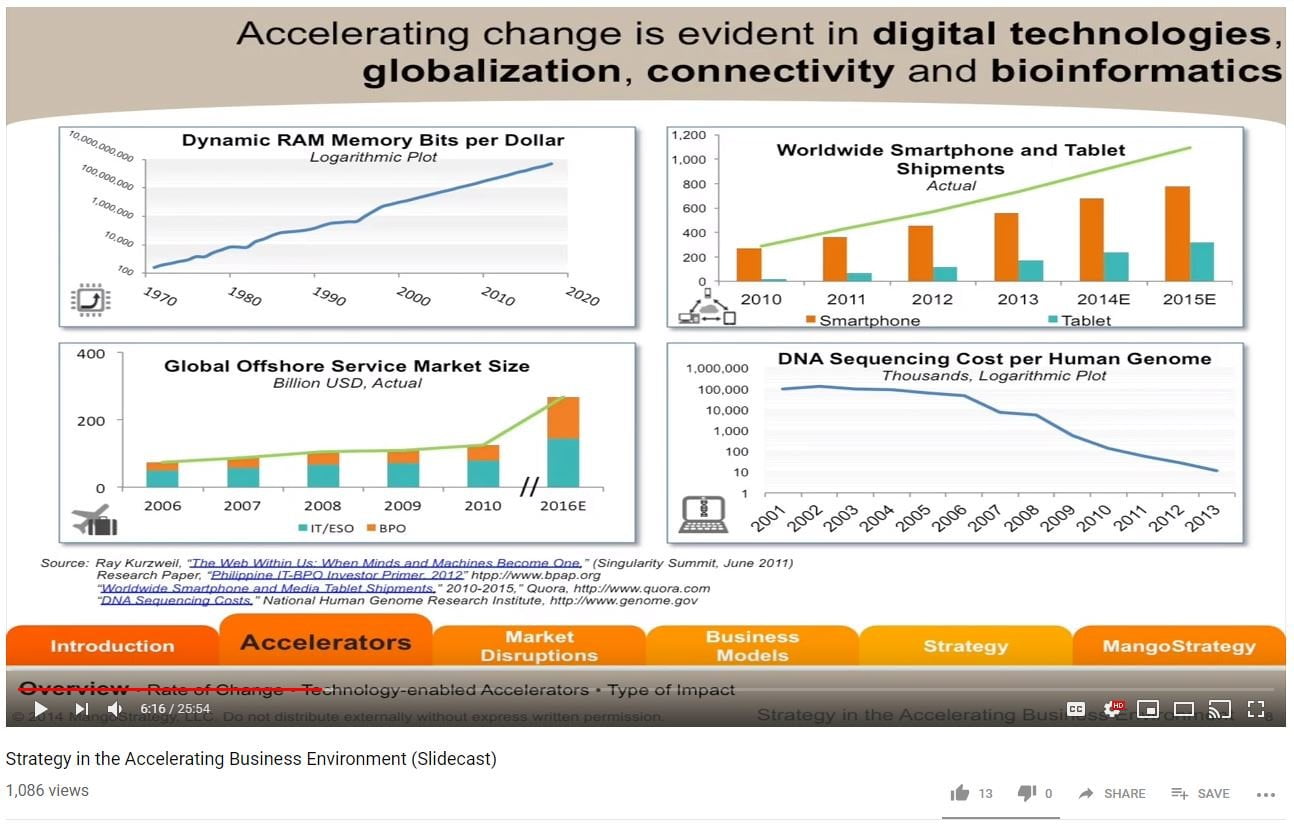
If you followed the steps I laid out earlier about slideshows, you’ll already be a pro at making them.
The next step is to record yourself commentating on the points that are presented.
Build a foundation of slide cast videos on YouTube to start attracting subscribers and building a fan base.
Once you get the ball rolling, consider picking up software like Sony Vegas and learning how to edit impressive videos.
Investing in a good microphone and webcam is also a smart idea to improve production quality.
5. E-books
E-book is short for electronic book, which is a book that comes in the form of a PDF file to make reading it convenient.
There were over 266 million of them sold in 2017 alone.
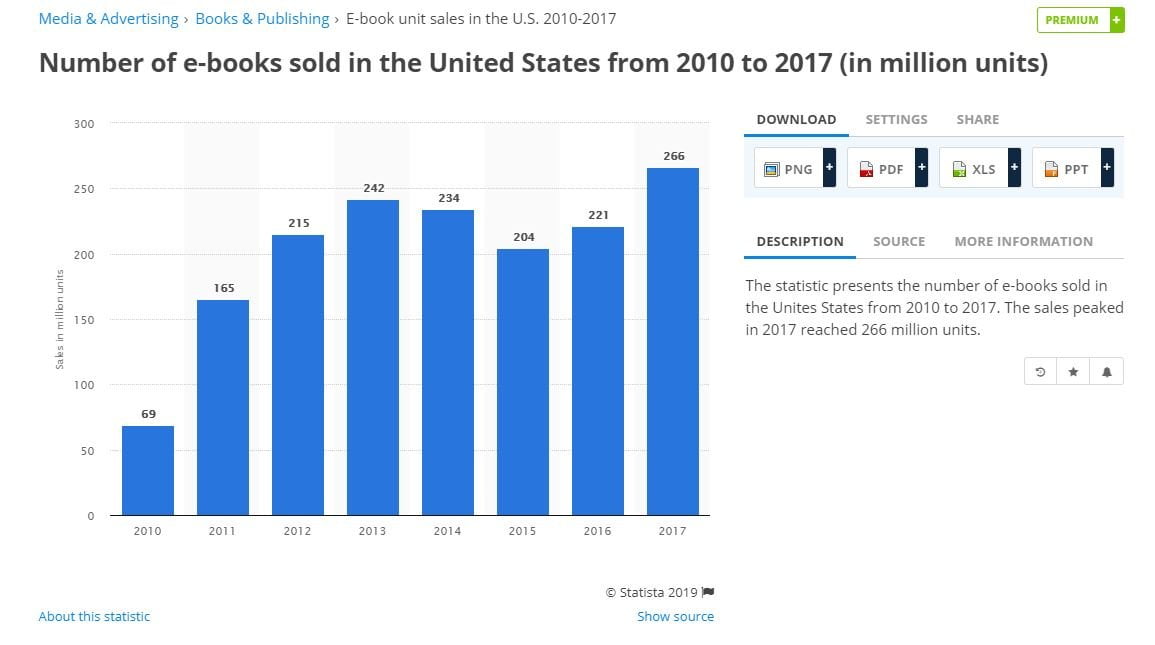
Whether you decide to sell or give away books for free, they make an excellent piece of content to produce.
There are also no minimums when producing your very own e-book. You can write as many pages as you like, and structure how you please.
I’d like to share some general rules and procedures to maximize the effectiveness of an e-book.
Outline the book before you begin writing
E-books consist of chapters and sub-chapters, among other pages like the table of contents. Since you already have a blog post to reformat into a book, I’d recommend taking a few minutes to map out how you’d like to structure it.
Starting in a Word doc, Google Drive, or another software of choice, create a table of contents to use as a guide for when you begin writing.
Set all of the chapters, and the sub-points you’d like to teach readers in each of them.
Include visuals
Some e-books do very well with only text, but it can be beneficial to include images. If you are guiding users through using a tool or something technical, pictures can help them understand the information better.
Graphs and charts are also good to back up statements you make and give further insight into trends or strategies.
Make it practical
Presuming you’re creating a book that is related to business, you need to make it practical.
Readers should be able to pick it up, learn something, and immediately apply the tactics you’ve outlined.
Guide them through how to execute marketing strategies, use the tools you mention, and optimize different processes.
Put time into the design
They say don’t judge a book by its cover, but that’s EXACTLY what you need to do.
If your e-book has a cover that looks like a five year old made it in Microsoft Paint, it probably won’t get much love.
You have to go deeper than that, too. The entire book needs to be formatted and designed professionally.
It adds to the production quality, and affects how readers will interpret the material.
These little details also reflect your brand, and how much you care about what you publish for the world to see.
6. Whitepapers
Whitepapers are effective middle or bottom-of-the-funnel content.
They help convert users into leads by showcasing why a certain industry, strategy, or field is important.
If you don’t know already, whitepapers are in-depth persuasive reports on one given subject.
They can make your brand appear more authoritative and credible.
Here’s how to write whitepapers properly.
Re-write it in a professional tone
Blog posts are typically written in a casual and friendly voice.
Whitepapers, however, are meant to be professional and serious. When repurposing a blog post into a whitepaper, ensure that you edit and proofread the tone carefully.
Create an exciting introduction
The intro to a whitepaper should captivate the audience, and make them interested in reading the rest of it.
You can achieve this by citing interesting statistics, making a bold statement, or saving something that goes against the grain of your industry.
Have a clear goal
What is your whitepaper trying to achieve? Normally the goal of a whitepaper is to propose an idea while providing statistics and real data that supports it.
For example, you might be writing a whitepaper on why content marketing is the future, and better than all other forms of advertising.
You would include case studies and further information that shows why this is true. With this in mind, always have a clear goal for each whitepaper.
7. Checklists
I don’t think there’s anything easier than repurposing articles into checklists.
Checklists are summaries of the main points that you covered in a blog post.
They are often just a single page, and very easy to make.
Many websites offer a checklist as a lead magnet where they are exchanged for an email subscription.
To make a checklist, simply convert the main points of your content into a nice-looking PDF.
Look how Reliablesoft offers this SEO checklist in one of their blog posts:
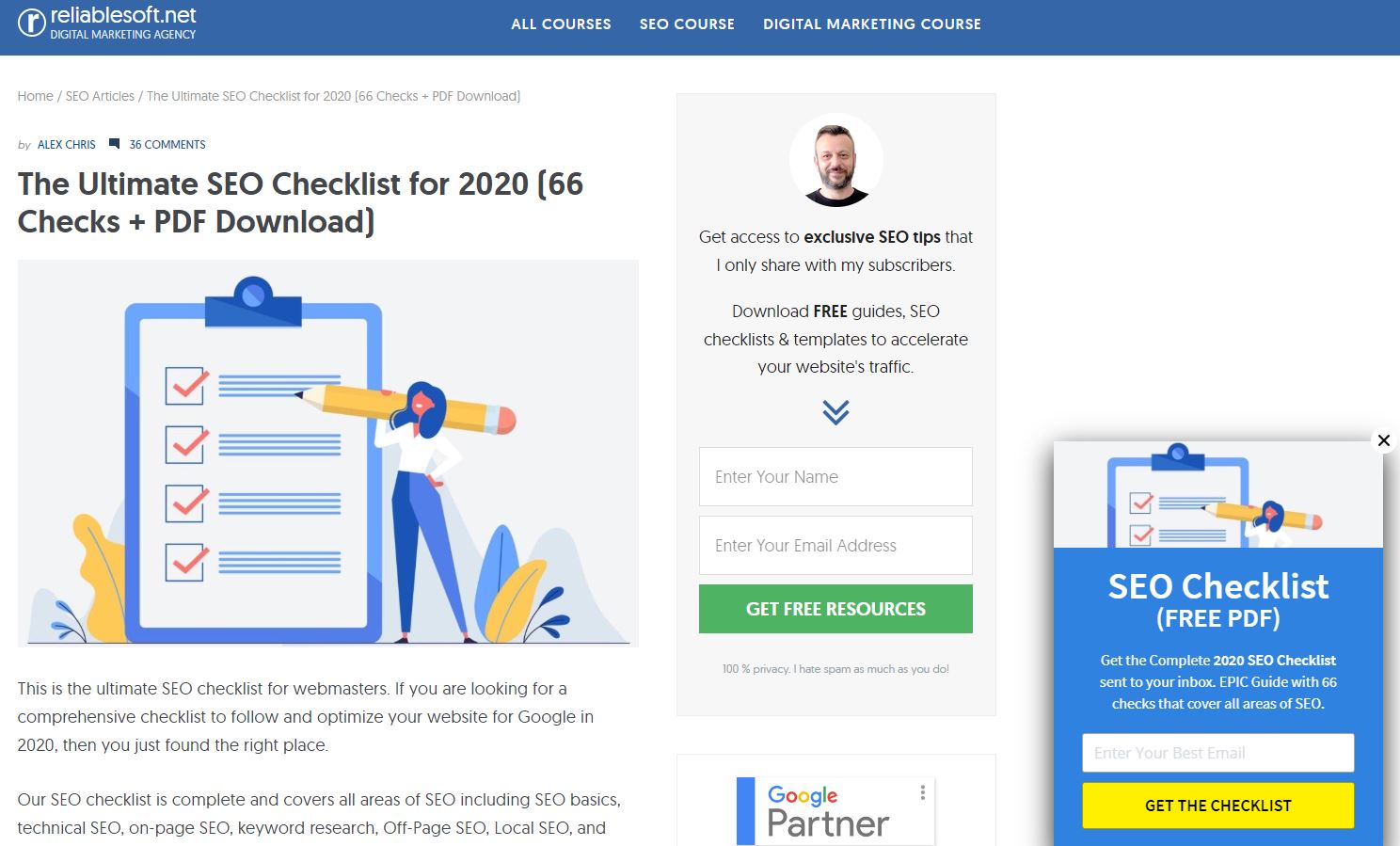
It contains the same information as their novel-length article except in a convenient PDF you can take on the go.
This is what I do with a lot of my content and it’s extremely cost-effective.
8. Social media posts
Yes, people still use social media.
While there are trends and fads about what network is the most hype, they’re all worth their weight.
That means you need to repurpose content for them to maximize engagement and reach.
It can be as simple as taking the main snippet from an article and spinning that into a personal social post.
Check out this article from Aaron Orendorff:
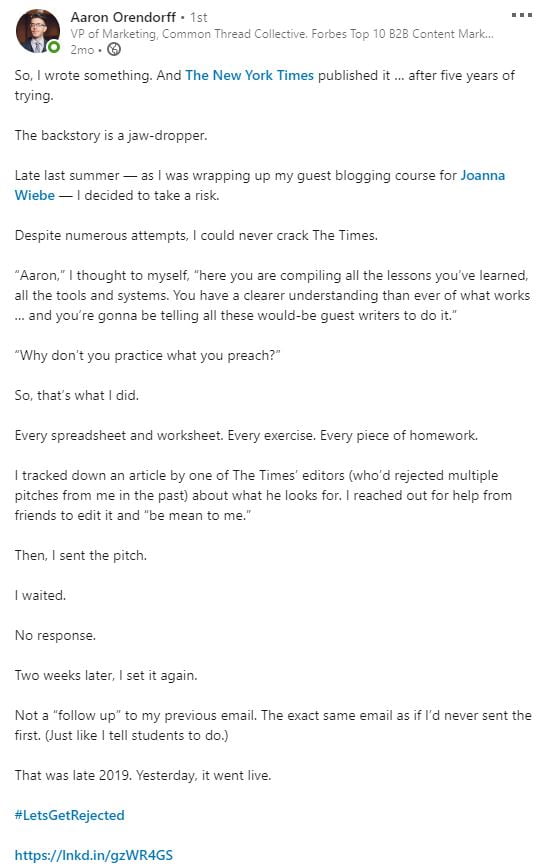
He took his New York Times article and spun it into a quick personal rant and story.
9. Case studies
Do you know what’s one of the best middle of the funnel assets?
Case studies.
A.K.A customers rave about how much they love you and how you transformed their business.
They convert like crazy in many cases.
That is precisely why repurposing content into case studies is an uber-effective strategy.
Firstly, I want you to cross-reference the piece of content you’re repurposing with existing customer success stories (or new potential ones).
Let’s say you wrote an article on LinkedIn lead generation.
You’d audit any previous clients that crushed it with your lead generation services.
The next step would be to create a case study on the process of working with that client and helping them achieve success while mixing in the topic of LinkedIn lead gen.
This could be used to generate more inbound leads and as a part of an outbound sales process.
10. Email newsletters
Email marketing is what? 30 years old?
It’s still more effective than most channels and tactics despite that.
According to Uplers, email marketing provides a 79% ROI which is better than SEO, content marketing, and PPC.
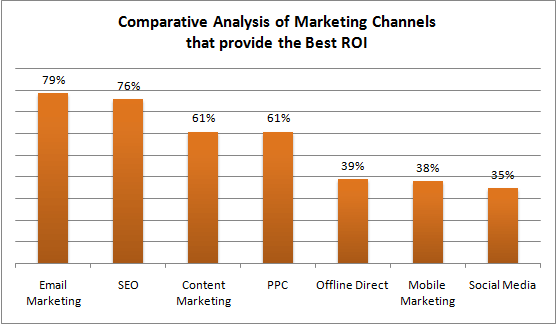
Here’s why…
First off, subscribers have to take the step to enter their information and subscribe to a newsletter. This directly implies they are more invested than the average user.
Secondly, it’s an intimate and fast way to connect with readers.
You send out content, news, or promotions at the snap of a finger and instantly see results.
Presuming you respect their inboxes they will continue to open and engage with emails over a long period of time.
It’s a simple way to stop users from slipping through the cracks and capture them before they leave your website.
I suggest taking existing pieces of content and reformating them into a newsletter within your favourite email marketing software.
Mine is Mailchimp. It might be Active Campaign, Convertkit, or another for you.
Make sure to get my free email sequence template and read my email copywriting template post for inspiration.
11. Online courses
The online learning industry is growing faster than a NASA spaceship.
It’s expected to hit a 423 billion market size by 2023. 👀

Don’t be late to the party.
Start considering selling online courses or offering free training.
The first is effective for driving revenue and the latter for lead generation.
You can get started for free with a platform like Teachable.
Step 1: Register for an account
Enter your email on the front page and click “Get started.”
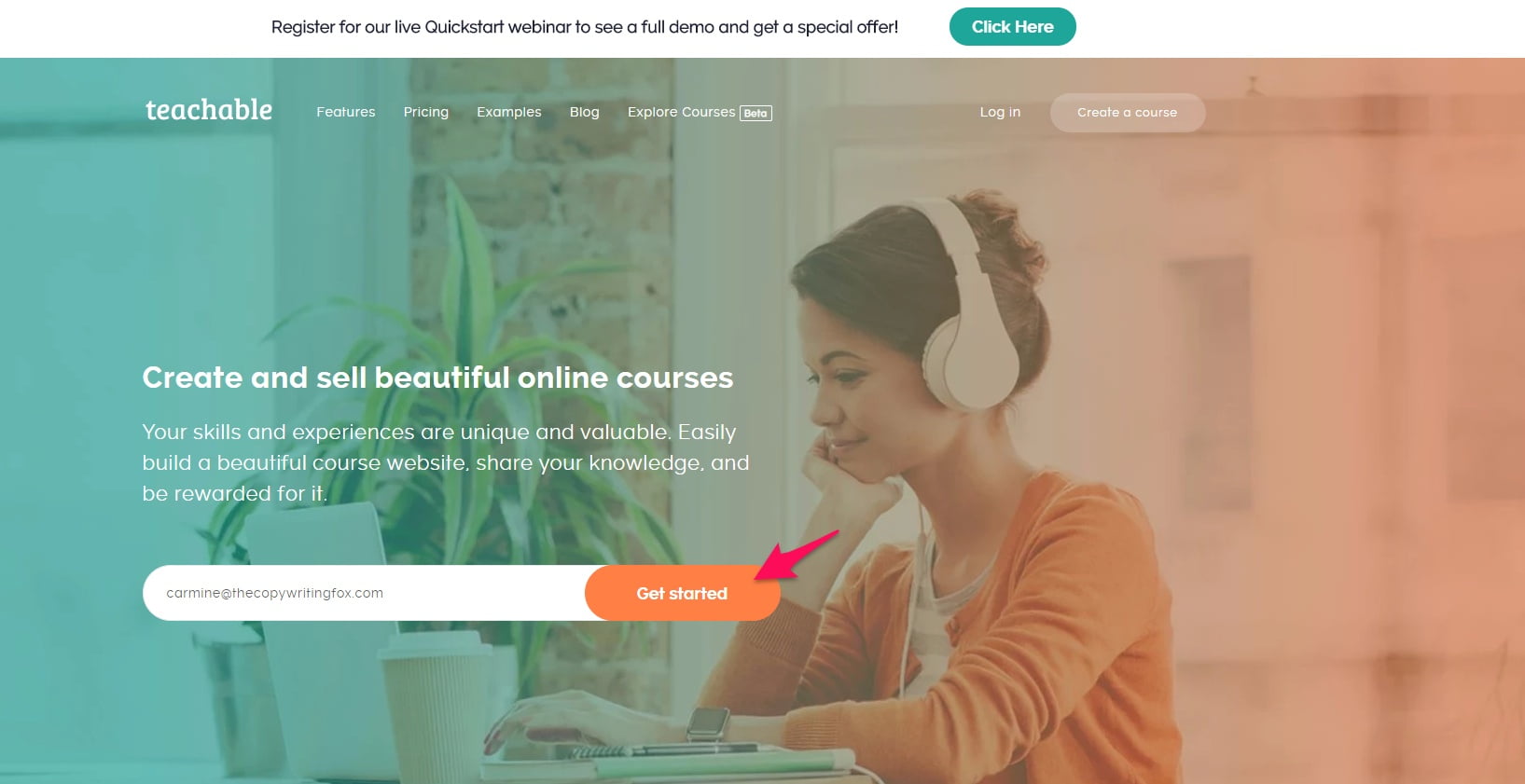
You will need to fill out some basic information about you and your business after this.
Step 2: Create a new course
Click the plus button next to the “Course” tab.
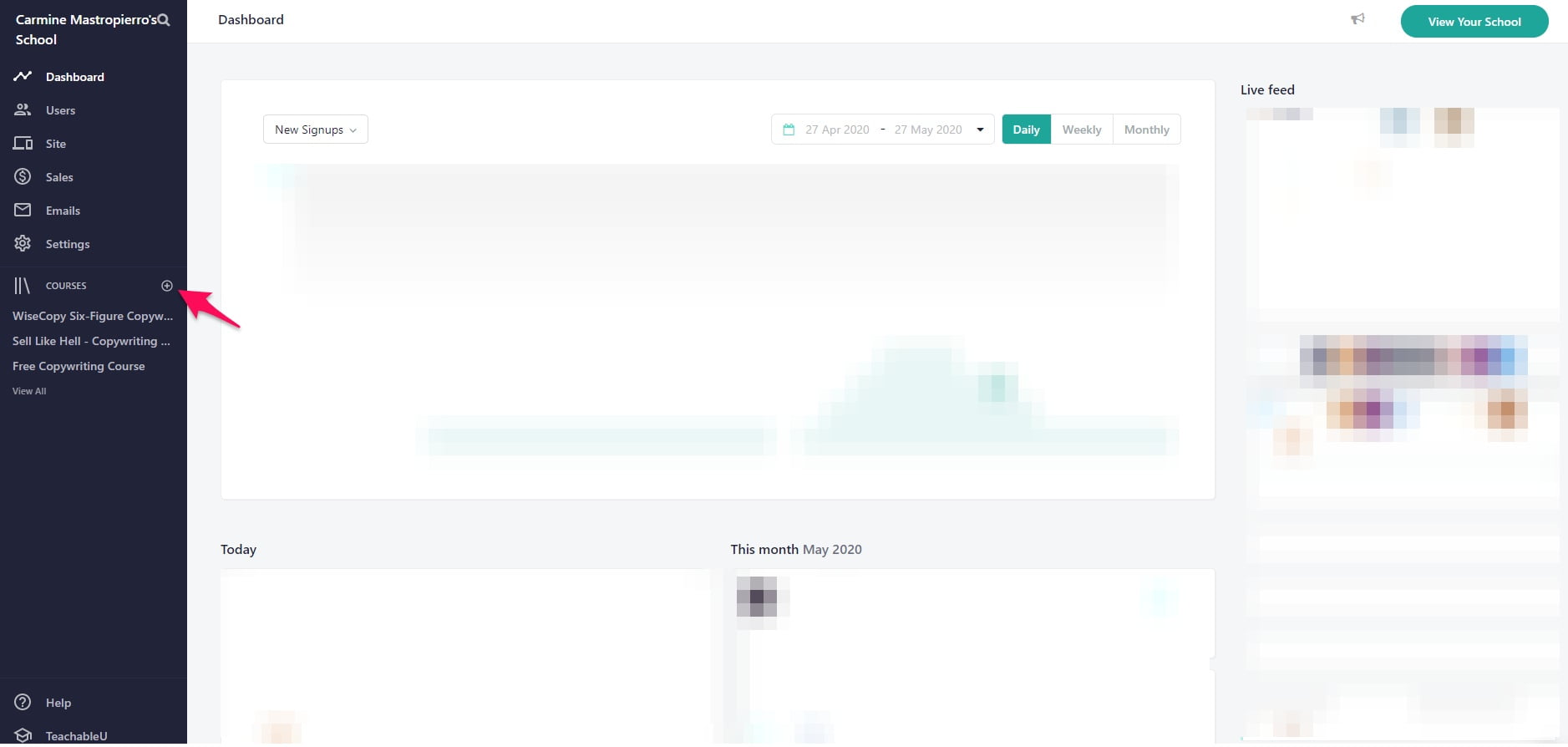
Give your course a title, subtitle, choose an author, and pick a template.
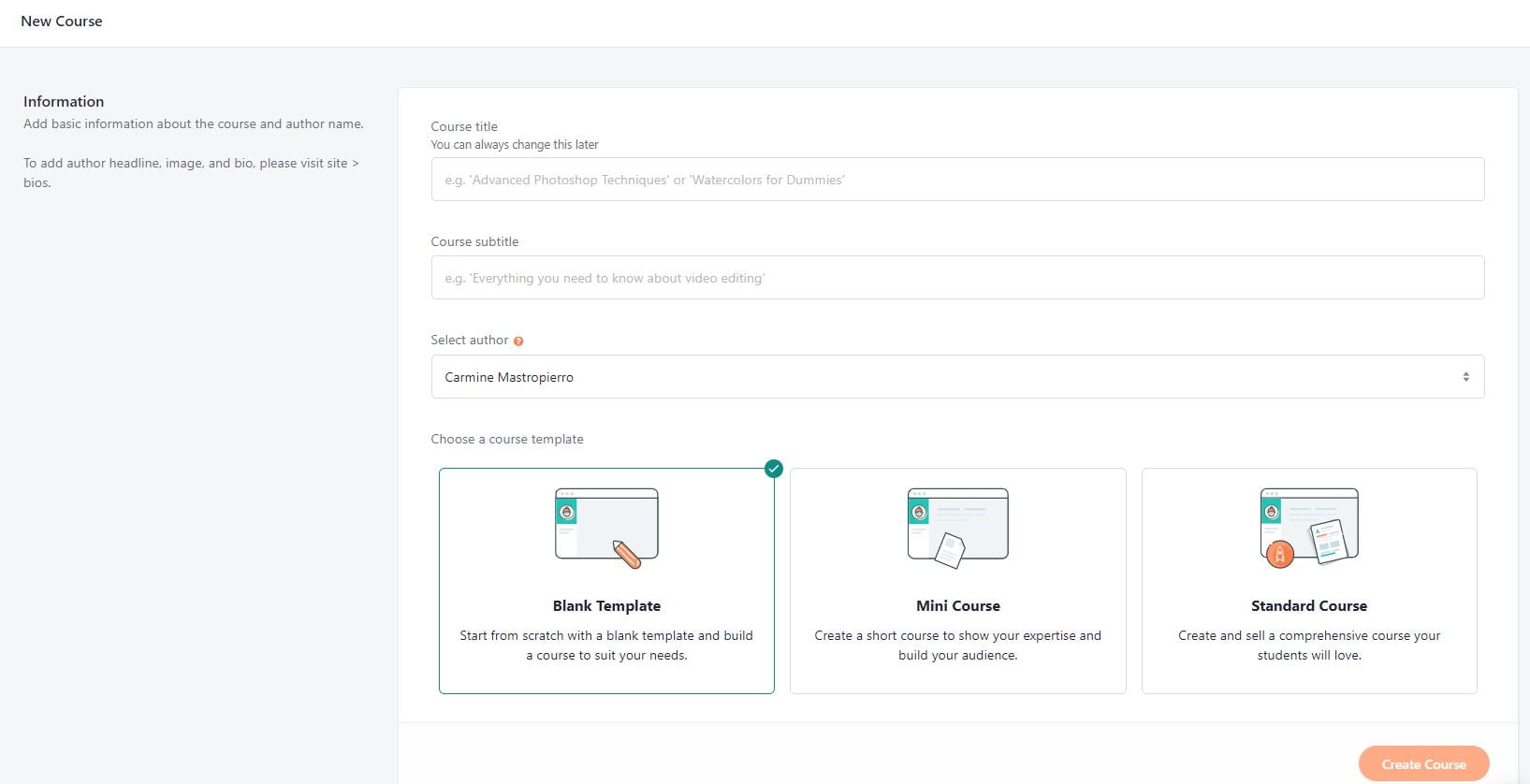
Add sections and lessons based on the original piece of content.
I also suggest adding quizzes and extra worksheets to provide extra value for students.
Feel free to use this as an opportunity to upsell products or services.
Courses take dedication and act as effective middle of the funnel content so students are more likely to convert when presented with offers.
Step 3: promote that bad boy
Once your course is finished, it’s time to let the world know!
Begin promoting it to your email list via a newsletter as I spoke about earlier.
This will instantly drive traffic and enrollments.
Then, spread it around your social networks. (i.e. LinkedIn, Twitter, and Facebook.)
Include it within the original piece of content you repurposed from whether it’s a blog post, video, or otherwise.
Final thoughts on how to repurpose content
Repurposing blog posts is a crucial step in any content marketing plan.
You can take one piece of content and turn it into several, resulting in further reach and traffic.
I recommend taking blog posts and turning them into the following:
- Slideshows
- Infographics
- Videos
- Podcast episodes
- E-books
- Whitepapers
- Checklists
- Case studies
Imagine if you wrote 100 blog posts, for example. That means you’d also have 100 of each of the above pieces of content, too!
This will have a seriously powerful impact on a brand’s inbound marketing performance.
Here’s an infographic that sums up repurposing content:
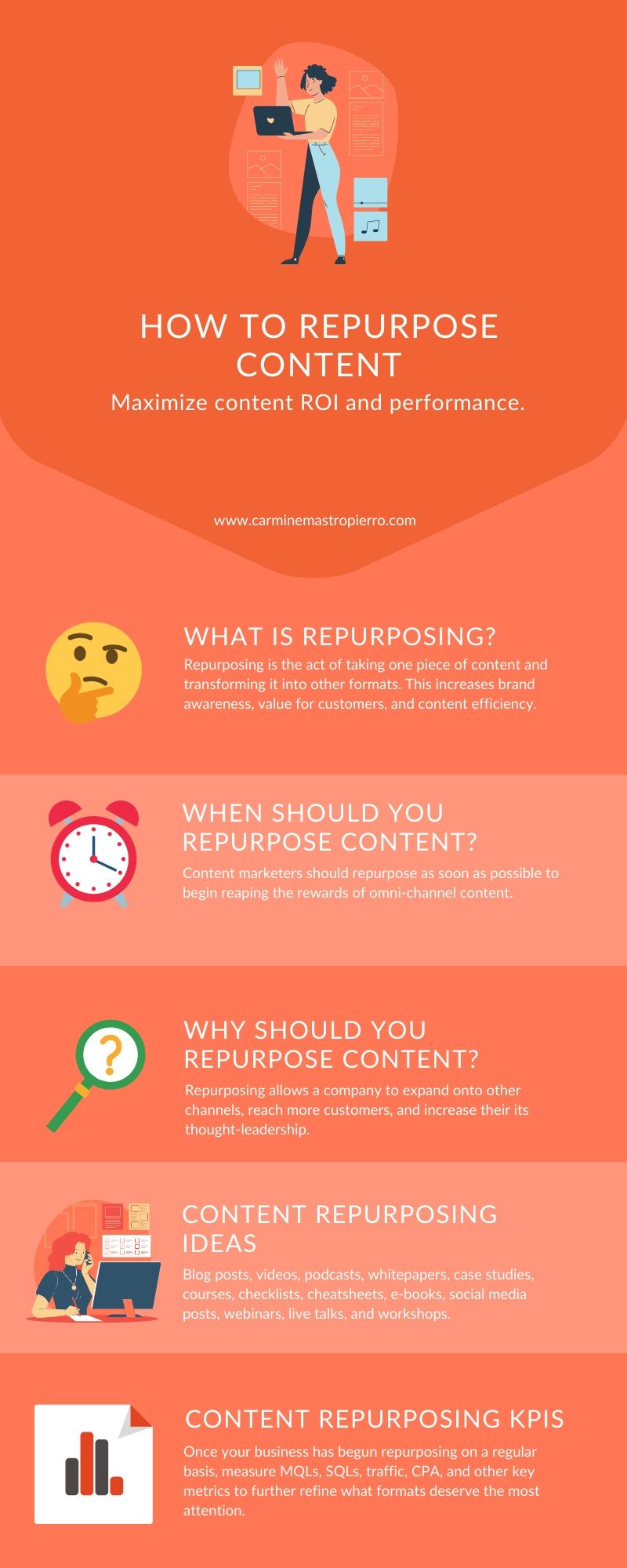
You’re welcome to contact me if you need a content writer or copywriter to help you out with what you’ve learned today.














